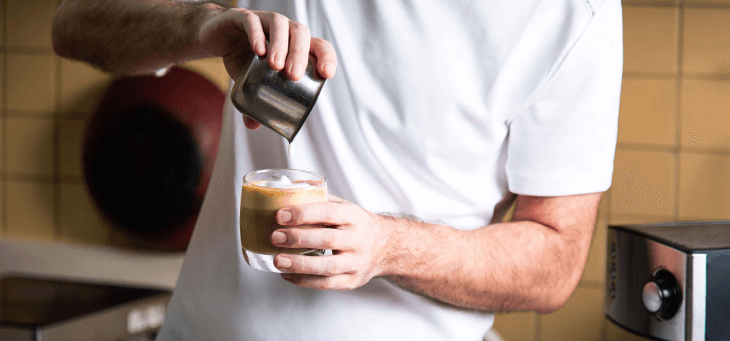It’s easy to go on autopilot with something you do every day – such as drinking a cup of coffee.
You might be brewing – or buying – the same cup over and over, but when was the last time you considered the environmental impact it is having? Here are five ways you can make your morning cup of coffee more sustainable.

1. Ditch single-use cups
Australians throw out 2.7 million single-use or disposable coffee cups every single day. This adds up to one billion coffee cups thrown out every year. It’s no surprise then that disposable coffee cups are a major contributor to litter on our streets and in our waterways.
If you regularly buy coffee, something as simple as investing in a reusable cup could dramatically cut down on waste.
2. Try a coffee pot or French press

If you want to make your coffee at home, why not consider buying an appliance that doesn’t use up extra electricity?
A French press or drip coffee maker will probably cost you a lot less than a fancy coffee machine, and you can still get a delicious brew – all you need to do is boil some water, and have coffee grounds to hand. To really minimise your carbon footprint, you could even try making a cold brew – where you don’t even have to boil any water for your cup.
Read: Scientists find coffee is good for your health
3. Consider where your coffee comes from
There are so many different types of coffee out there, it can be overwhelming to know what to pick – particularly if you’re worried about how ethical and sustainable it is.
For an easy hack, look out for coffee with the Fairtrade label. Why? “Fairtrade sets social, economic and environmental criteria. For producers, these standards include protection of workers’ rights, environmentally sound, climate-friendly farming practices and criteria to ensure product quality,” the foundation says.
It doesn’t have to cost the earth either – lots of supermarket brands stock Fairtrade coffee, including Aldi and Coles.
4. Test out different coffee pods
If you do have a coffee machine that uses pods, you might want to have a think about what kind you’re using.
Read: Four coffee machines to avoid purchasing
Each type of pod is different – you might be able to recycle yours, but some contain virgin aluminium, and others are made up of plastic parts.
As the pods are single-use, it’s worth looking at the type you have – and considering the impact it might be having on the environment. If you want to be more sustainable, opt for a coffee pod you can recycle or compost yourself.
5. Reuse your coffee grounds
Spread leftover coffee grounds through your #garden to keep #wildlife and other pests out. #NationalGardenWeek pic.twitter.com/7NXvc7qiRB
— American Bio-Tech Wildlife Services (@AmericanBioCT) June 9, 2022
This is a great one for extending the life cycle of your morning cup of coffee. Instead of dumping out used coffee grounds when you’re done with them, did you know they can be reused in a multitude of ways?
Read: Could leftover tea and coffee feed your plants?
Sprinkle the grounds on your garden and they’ll act as a natural fertiliser and insect repellent. Or maybe make them into a DIY exfoliating skin scrub – just because you’ve had your coffee, it doesn’t mean you can’t continue to find more uses for it.
– With PA
If you enjoy our content, don’t keep it to yourself. Share our free eNews with your friends and encourage them to sign up.

